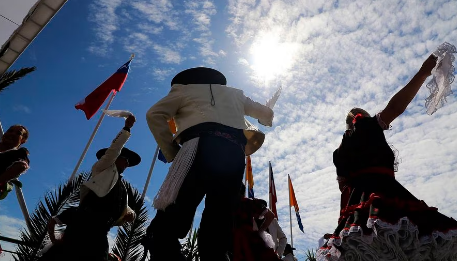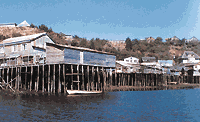The Camahueto
– It is an animal that looks like a calf covered in shiny, short fur. It has a big golden horn on its forehead. When it reaches adulthood, it moves to the sea, destroying anything that gets in its way. With its horn, it gouges the earth so much the tracks then become rivers or streams.
What does the Camahueto look like?
What does the Camahueto do with its horn?
Flora and Fauna
Chiloe’s insular conditions have resulted in the development of unique and rich plant and animal life. They have evolved over millions of years practically in isolation, creating endemic animal and plant species.
– Broadleaf, evergreen and Valdivian temperate forests are predominant in Chiloe.
– Some of the most important tree species are the Patagonian cypress and Chilean myrtle, while standouts among mammals include the south Andean deer, the pudu, the chilote fox and the monitor del monte.
Why does Chiloe have such rich biodiversity?
What types of forests are predominant in the area?
Chiloe: a natural area for tourism
Some of the most attractive places in Chiloe are Castro and its stilt houses; Ancud and the San Antonio and Ahui forst; Dalcahue and its churches; Chonchi and its cherry liquor and chonchina donuts; and Quemchi and its handicrafts.
– The Chiloe National Park was created in 1982. It has a surface area of 43,057 hectares split into three sectors: Chepu, Anay and Metalqui islet.
What is the most characteristic feature of Castro?
How many sectors is the Chiloe National Park split into?






